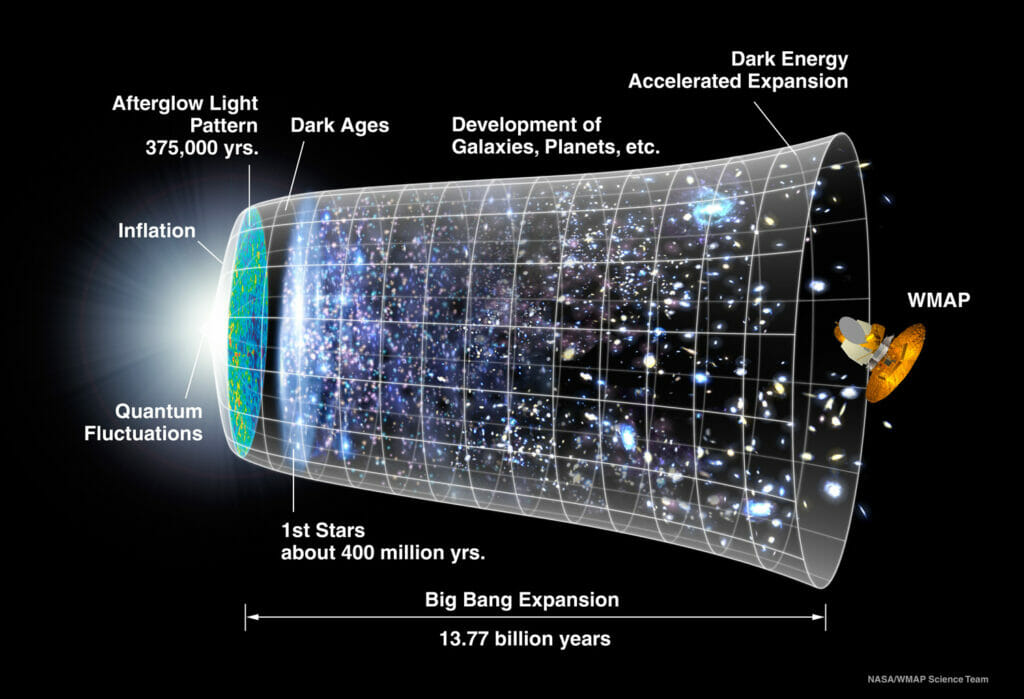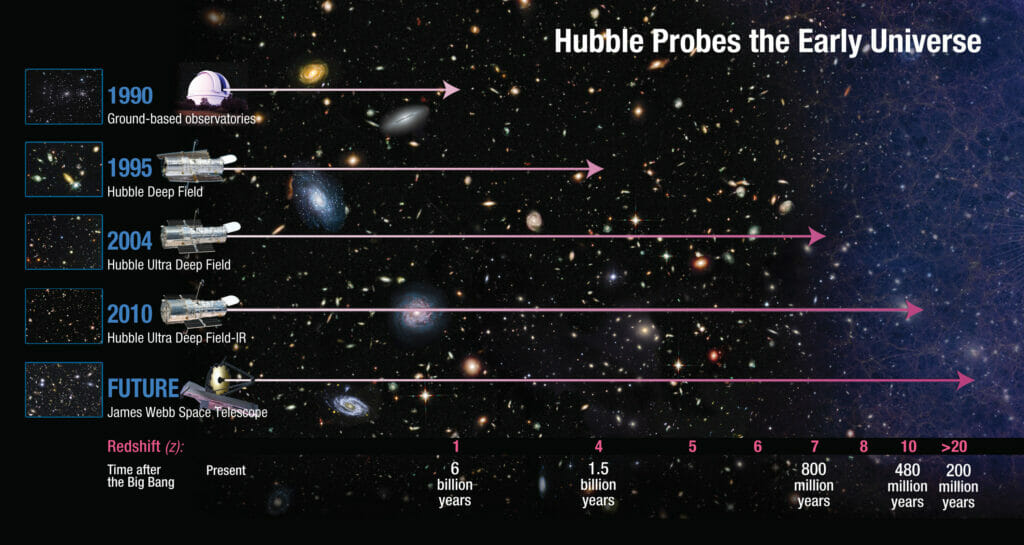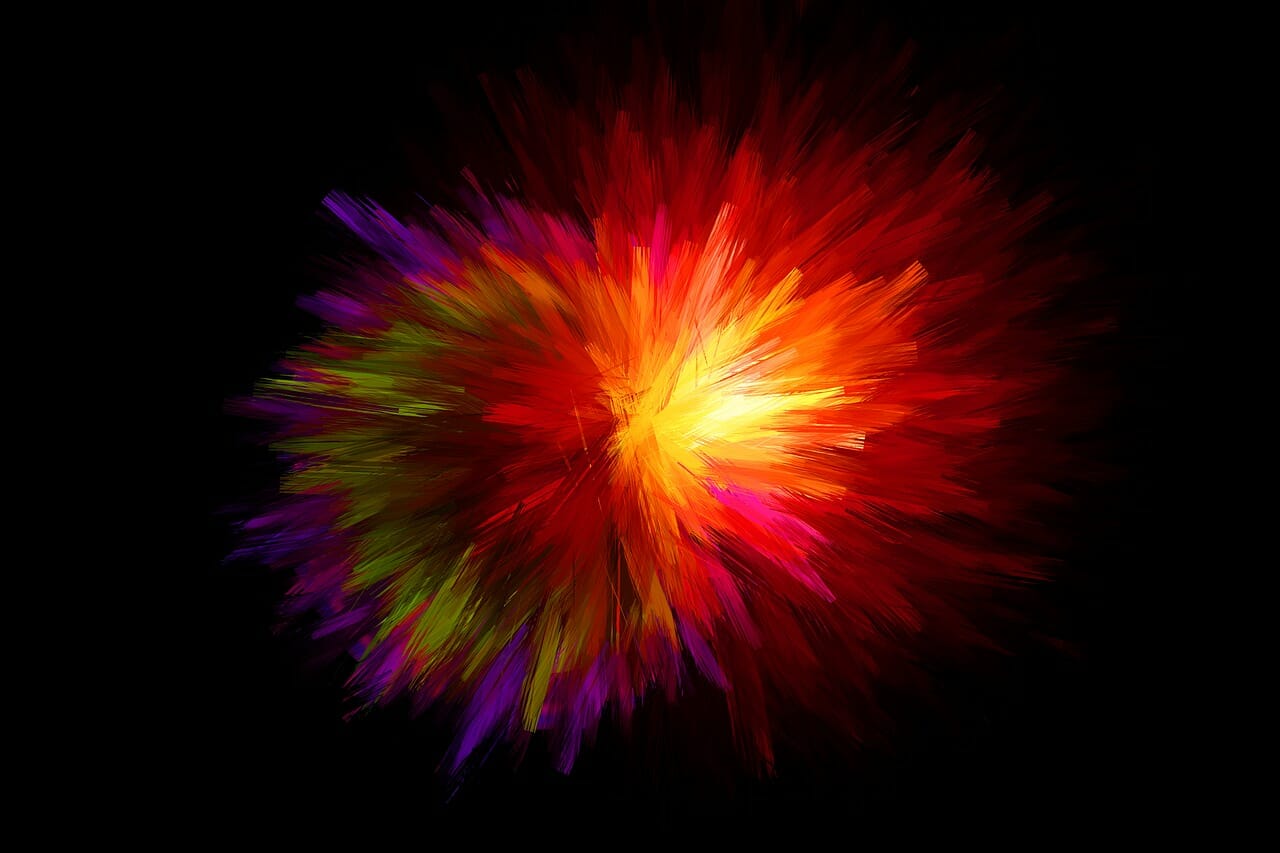The Big Bang Theory is the currently the most accepted explanation behind the beginning of the Universe and the current standard cosmological model (Lambda-Cold Dark Matter or Lambda-CDM model) is based on. Thought the Big Bang Theory doesn’t give us the whole explanation of the Origin of the Universe. It explained that the Universe started with a Big Bang or you say singularity about 13.82 billion years ago. Though we fully don’t know how it happened, we are able understand it through mathematical equations and models.
Timeline of the Big Bang
1. Singularity & Inflation
The Universe was born due to a gravitational singularity (which is when a point in space-time where the gravitational field of the body becomes infinite as predicted by General Relativity). Though this an irregular behavior which we do not have an adequate understanding of it.
According to the theory, when the Universe was born it was very dense and very hot. The singularity is also known as Planck Epoch or Planck Era. During this period, all matter was condensed on a single point of extreme heat and infinite density. It was also believed that the quantum effects of gravity dominated physical interaction and gravity was the strongest as compared to the other physical forces.

Inflation started at 10-32 seconds, after the creation of the fundamental forces of the Universe. The Inflation continued up to a unknown point, which most cosmological models suggest that it continued until the Universe was filled with a high-energy density and that the extremely high temperatures and pressures gave rise to cooling and expansion of the Universe
When the Big Bang occurred, the temperature surrounding at the very first second was about 5.5 billion Celsius (or 10 billion Fahrenheit) with formation of neutrons, protons, electrons, photons, positrons (anti-electrons) and neutrinos with the number being more than 10 billion degree (i.e. 10^10). However, as time passed by, it was seen that the Universe cooled down, neutrons and protons combined to form an isotope of hydrogen deuterium.
2. Cooling & Structure
As the Universe continued to cool down, it reached the temperature at which electrons could combine with nuclei to form neutral atoms. Before this, the Universe was undergoing Inflation, where at the start the Universe appeared to have been opaque because free electrons would cause photons (light) to scatter. However, when the free electron were seen combining to form neutral atoms, the Universe started to become transparent. Those same photons are now the afterglow of the Big Bang is now known as Cosmic Microwave Background (CMB), which is known as the oldest light in the Universe. Though as the CMB expanded, it gradually lead the Universe to lose density and energy.

As time passed by which was about a few billion years, the denser region in the almost uniformly distributed matter of the Universe started to get gravitationally attracted to each other. This attraction between the matter lead to the formation of gas clouds, stars, galaxies and all the other astronomical bodies we see today. As visible matter was formed, more suggested types of matter was formed which was cold dark matter, warm dark matter, hot dark matter and baryonic matter. However, the Lambda-CDM Model which is considered the standard model of Big Bang, has dark matter particles fit in as it matches with the available data.
3. The Present Expanding Universe
The present Universe we are in is currently dominated by a mysterious form of energy called Dark Energy. Observations suggest that it compromises about 73% of the total energy density of the present Universe. It is suggested that when the Universe was formed, it was infused with dark energy, but due to less space and everything was close together, gravity dominated dark energy and it was slowly barking the expansion. But as time passed with Universe expanding, the growing amount of dark energy caused the expansion in the Universe to slowly accelerate.
History of the Big Bang
The word “Big Bang” was coined by English Astronomer Fred Hoyle during a talk for BBC Radio in March, 1949, quoting that: “These theories were based on the hypothesis that all the matter in the universe was created in one big bang at a particular time in the remote past.”
In the early 20th century, most of the astronomers believed that the Universe was static saying that nothing new was added and the size didn’t change.
The first evidence proving that this so-believed “static model” was wrong came in the form of a discovery by an American astronomer Vesto Slipher in 1912. When he was measuring the Doppler Shift (which is the change in frequency of a wave in relation to an observer who is moving relative to the wave source) of a spiral galaxy and discovered that the almost such galaxies were receding from Earth.
A decade later, Russian physicist Alexander Friedmann derived the Friedmann equations from Albert Einstein’s field equations, showing that the Universe was expanding rather than static as stated by Einstein. In 1924, American physicist Edwin Hubble added details to the measurements done by Vesto Slipher by providing distances and later Belgian physicist Georges Lemaître showed evidence that the Universe was expanding which gave rise to Hubble- Lemaître Law or famously known as the Hubble Law which gave a correlation between distance and recessional velocity.
In 1968 and 1970, Roger Penrose, Stephen Hawking, and George F. R. Ellis published papers where they showed that mathematical singularities were an initial condition of relativistic models of the Big Bang.

Later in the late 1990s, there was seen a huge progress in the theory due to telescopes and as well as analysis of data from satellites such as Cosmic Background Explorer (COBE), Hubble Space Telescope and Wilkinson Microwave Anisotropy Probe (WMAP).




You have made some good points there. I checked on the internet for additional information about the issue
and found most individuals will go along with your views on this website.